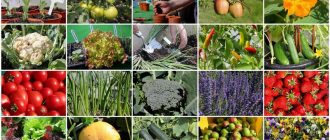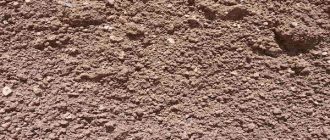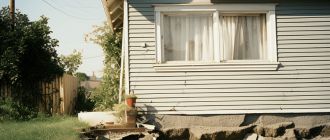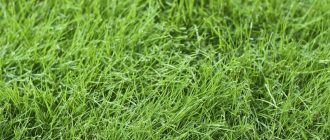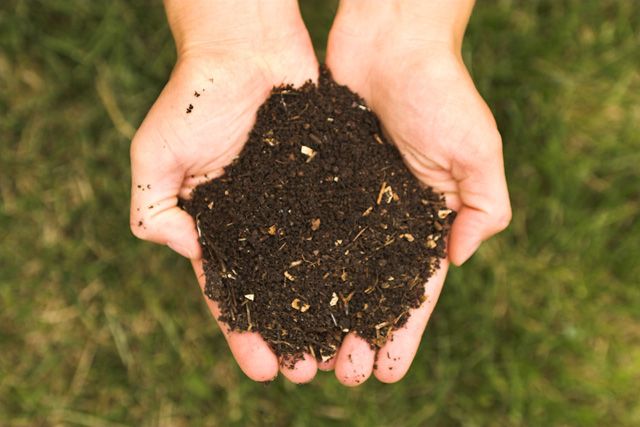
Green Thumb Guide to Compost Soil
Do you have a green thumb? Are you passionate about growing healthy, flourishing plants? Then compost soil is your secret weapon! Compost soil, also known as “black gold,” is a nutrient-rich powerhouse that can supercharge your garden and help your plants thrive.
In this comprehensive guide, we will explore everything you need to know about compost soil, from its many benefits to how to create your own compost. Whether you’re a seasoned gardener or just starting out, this guide will help you unlock the full potential of your green thumb.
Compost is the result of decomposed organic matter like vegetable scraps, leaves, and grass clippings. It is a rich, dark soil that is teeming with beneficial microorganisms. When added to your garden, compost enriches the soil, improves drainage, and enhances its ability to retain moisture, creating the perfect environment for plants to grow.
So why spend a fortune on synthetic fertilizers and soil conditioners when you can easily create nutrient-rich compost soil in your own backyard? With the right techniques and a little patience, you can turn kitchen scraps and yard waste into a powerful elixir that will nourish your plants and help them thrive. So let’s roll up our sleeves and dig into the world of compost soil!
Understanding Compost Soil
Compost soil plays a vital role in successful gardening, and having a green thumb guide to understanding compost soil can greatly improve your gardening experience. Compost soil is a nutrient-rich, organic matter that is created through the process of decomposition. It is an essential component for healthy plant growth, providing essential nutrients and improving soil structure.
Compost soil is often referred to as “black gold” due to its rich, dark color and its ability to improve soil fertility. It is made up of various organic materials, such as kitchen scraps, yard waste, and other biodegradable materials. These materials are broken down by microorganisms, such as bacteria and fungi, which convert them into a nutrient-rich substance. Composting also helps to reduce waste and support sustainable gardening practices.
When using compost soil in your garden, it is important to consider its composition. Compost soil should be well-balanced, with a good mix of nitrogen-rich “green” materials, such as grass clippings and kitchen waste, and carbon-rich “brown” materials, such as leaves and twigs. The ideal balance of these materials will ensure that the compost soil provides a steady release of nutrients to your plants.
In addition to providing essential nutrients, compost soil also helps to improve soil structure. It increases the ability of soil to retain water and nutrients, reducing the need for additional fertilizers and watering. It also enhances soil aeration and drainage, creating a healthy environment for plant roots to grow.
Using compost soil is an eco-friendly and cost-effective way to improve your gardening results. By recycling organic waste through composting, you are reducing the amount of waste that goes to landfills and minimizing the use of chemical fertilizers. This not only benefits your garden but also the environment as a whole.
In conclusion, understanding compost soil is essential for any green thumb gardener. Its nutrient-rich composition and ability to improve soil fertility and structure make it a valuable resource for successful gardening. By incorporating compost soil into your gardening practices, you can create a thriving garden while also promoting sustainability.
Benefits of Compost Soil
With a green thumb, you have the power to transform your soil into nutrient-rich compost that will benefit your plants in many ways. Compost soil, also known as black gold, is the result of decomposed organic matter, such as food scraps, yard waste, and leaves. Here are some of the benefits of using compost soil in your garden:
- Improved Soil Structure: Compost improves soil structure by loosening compacted soil and allowing for better water drainage and root penetration.
- Increased Nutrient Content: Compost adds essential nutrients to the soil, including nitrogen, phosphorus, and potassium, which are vital for plant growth and development.
- Enhanced Water Retention: Compost acts like a sponge, retaining moisture in the soil and reducing water runoff. This helps to prevent soil erosion and ensures that plants have a steady supply of water.
- Reduced Need for Synthetic Fertilizers: By using compost soil, you can reduce your dependency on synthetic fertilizers, which can be harmful to the environment. Compost provides a slow-release source of nutrients that plants can readily absorb.
- Promotion of Beneficial Soil Microorganisms: Compost is teeming with beneficial bacteria, fungi, and other microorganisms that help break down organic matter, suppress plant diseases, and improve soil health.
- Environmental Benefits: Composting helps to divert organic waste from landfills, reducing greenhouse gas emissions. It also reduces the need for chemical fertilizers, which can pollute waterways and harm ecosystems.
By incorporating compost soil into your gardening routine, you can create a healthy and sustainable environment for your plants to thrive. So grab your green thumb and start composting today!
Creating Compost Soil
Compost soil is a key component for a green thumb. In this guide, we will show you how to create nutrient-rich soil using the composting process.
Composting is a natural way to recycle organic waste, such as kitchen scraps, yard trimmings, and leaves, into a valuable soil amendment. By breaking down these materials, you can create compost soil that is rich in nutrients and beneficial microorganisms.
Here are the steps to create compost soil:
1. Choose a composting method:
There are several methods to choose from for composting, including traditional composting bins, compost tumblers, and vermiculture (composting with worms). Each method has its own benefits and considerations, so choose the one that works best for your needs and available space.
2. Collect compostable materials:
Collect a variety of compostable materials, such as fruit and vegetable scraps, coffee grounds, eggshells, grass clippings, and shredded leaves. Avoid adding meat, dairy products, and oily foods, as they can attract pests and slow down the composting process.
3. Build your compost pile:
Layer your compostable materials in a pile or bin, alternating between green (nitrogen-rich) and brown (carbon-rich) materials. Green materials include food scraps and grass clippings, while brown materials include leaves and shredded paper. Make sure to moisten each layer as you go.
4. Turn the compost pile:
To speed up the composting process and ensure even decomposition, regularly turn your compost pile with a garden fork or compost turning tool. This helps to aerate the pile and mix the materials, creating the ideal conditions for decomposition.
5. Maintain the compost pile:
Monitor the moisture level of your compost pile and add water if it becomes too dry or cover it if it gets too wet. Also, consider adding a compost activator, such as manure or finished compost, to kick-start the decomposition process and introduce beneficial microorganisms.
Over time, your compost pile will transform into nutrient-rich compost soil that can be used in your garden beds, containers, or as a top dressing for existing plants. This nutrient-rich soil will improve soil structure, retain moisture, and provide essential nutrients for plant growth.
Remember, creating compost soil takes time and patience. It may take several months for the organic materials to fully decompose and for the compost to mature. But the end result is well worth it, as you’ll have a sustainable and natural way to enrich your plants and reduce waste.
Choosing the Right Ingredients
When it comes to creating nutrient-rich compost soil, having a green thumb is key. Knowing which ingredients to use in your compost mixture will help ensure that your plants thrive and grow to their full potential. Here is a guide to choosing the right ingredients for your compost soil:
| Animal Manure | Provides essential nutrients and adds beneficial bacteria to the compost. |
| Vegetable Scraps | Contributes nitrogen and moisture to the compost pile. |
| Leaves | Rich in carbon, helps create a well-balanced compost mixture. |
| Grass Clippings | High in nitrogen, adds heat to the compost and speeds up decomposition. |
| Twigs and Branches | Adds structure to the compost pile and helps with aeration. |
| Shredded Paper | Provides carbon and helps maintain moisture levels in the compost. |
| Coffee Grounds | Rich source of nitrogen and adds acidity to the compost. |
| Eggshells | Supplies calcium to the compost, which is beneficial for plant growth. |
Remember, a good rule of thumb is to have a well-balanced mixture of green and brown materials. Green materials, such as vegetable scraps and grass clippings, provide nitrogen, while brown materials like leaves and shredded paper provide carbon. By choosing the right ingredients and maintaining a proper balance, your compost soil will be teeming with nutrients for your plants.
Building a Compost Pile
Composting is an essential practice for any green thumb looking to create nutrient-rich soil. By building your own compost pile, you can turn everyday organic waste into a valuable resource for your garden.
To start building your compost pile, gather a mix of “green” and “brown” materials. Green materials include fresh grass clippings, kitchen scraps, and garden waste. Brown materials include dried leaves, straw, and wood chips. Aim for a ratio of roughly three parts brown material to one part green material.
Next, find a suitable location for your compost pile. It should be easily accessible and have good drainage. You can choose to build your compost pile directly on the ground or use a compost bin or container. If you opt for a container, make sure it has ventilation holes to promote airflow.
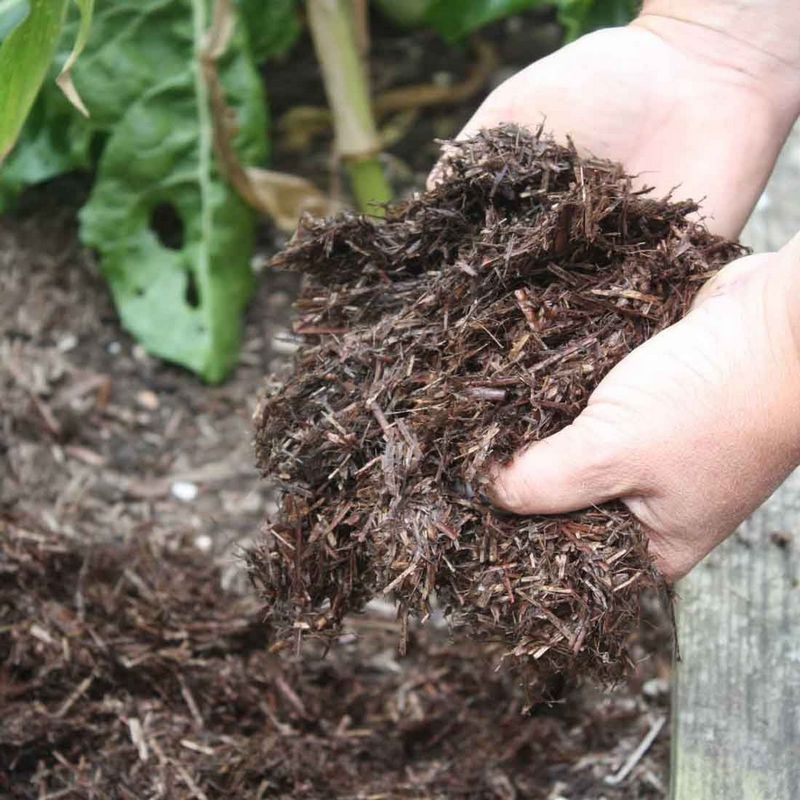
Begin by laying down a layer of brown materials as the base of your compost pile. This will help with drainage and prevent any odors. Then, add a layer of green materials on top. Repeat this layering process until you have used up all your organic waste.
It’s important to periodically turn your compost pile to promote decomposition. Use a pitchfork or shovel to mix the materials together, bringing the outer layers to the center. This will help speed up the composting process and ensure that all materials are evenly decomposed.
While your compost pile is decomposing, keep it moist, but not overly wet. If it becomes too dry, add water to maintain proper moisture levels. On the other hand, if it becomes too wet, add more brown materials to absorb the excess moisture.
Once your compost pile has fully decomposed, it will have transformed into nutrient-rich soil that can be used to feed your plants. Use a garden fork or sieve to remove any larger debris and create a fine-textured compost soil.
Remember to be patient and allow time for your compost pile to fully break down. With proper maintenance and regular turning, you’ll soon have a plentiful supply of nutrient-rich compost soil for your garden.
Monitoring the Composting Process
As a green thumb, it’s important to closely monitor the composting process in order to ensure the creation of nutrient-rich soil. Monitoring allows you to track the progress of decomposition and make necessary adjustments to maintain ideal conditions for composting.
One effective way to monitor composting is by performing regular visual inspections. Look for signs of decomposition, such as the presence of earthworms, fungi, and a dark, crumbly texture. This indicates that the organic materials are breaking down successfully and transforming into rich compost.
In addition to visual inspections, it’s also important to monitor the temperature of the compost pile. Thermometers designed for composting can be inserted into the pile to measure the internal temperature. The ideal temperature range for composting is between 120°F and 160°F (49°C and 71°C). If the temperature falls below this range, it may indicate that the compost pile is not decomposing efficiently. On the other hand, excessively high temperatures can lead to the loss of beneficial microorganisms.
Monitoring the moisture content of the compost is another crucial aspect. The compost pile should ideally have a moisture level of around 50%. Too much moisture can cause the pile to become waterlogged and anaerobic, while too little moisture can impede decomposition. To maintain the correct moisture level, periodically check the compost pile by squeezing a handful of compost. It should feel damp, like a wrung-out sponge.
| Visual signs of decomposition | Regular visual inspections |
| Temperature | Use a composting thermometer |
| Moisture | Squeeze a handful of compost |
By closely monitoring the composting process, you can ensure that your green thumb efforts result in nutrient-rich soil that will enhance the growth and health of your plants.
Using Compost Soil
One of the most important tools in the green thumb’s arsenal is nutrient-rich compost soil. Compost soil is a product of the composting process, where organic materials such as kitchen scraps, yard waste, and leaves decompose and turn into a dark, crumbly, and earthy-smelling substance.
When it comes to using compost soil in your gardening endeavors, the possibilities are endless. Here are a few ways you can incorporate this green gold into your gardening routine:
1. Improving soil structure: Green thumb enthusiasts know that soil is the foundation of a successful garden. Adding compost soil to your existing soil can greatly improve its structure, making it lighter and more easily workable. The organic matter in compost soil helps to break up heavy clay soils, allowing for better aeration and water drainage.
2. Enriching soil with nutrients: Compost soil is teeming with beneficial nutrients that nourish plants and promote their healthy growth. As you incorporate compost soil into your garden beds or containers, it releases these nutrients slowly over time, providing a steady supply of food for your plants. This can reduce the need for synthetic fertilizers and provide a more sustainable approach to gardening.
3. Mulching and top-dressing: Another way to use compost soil is as a mulch or top-dressing around your plants. Applying a layer of compost soil on the soil surface helps to conserve moisture, suppress weeds, and regulate soil temperature. It also slowly releases nutrients into the soil as it breaks down, feeding your plants and improving overall soil health.
4. Starting seeds and seedlings: Compost soil is an excellent medium for starting seeds and transplanting seedlings. Its rich nutrient content and fine texture provide the ideal conditions for seed germination and young plant growth. Simply fill trays or pots with a mixture of compost soil and other growing mediums, and watch your plants thrive.
Remember, compost soil is an invaluable resource for any green thumb. Its ability to improve soil structure, enrich with nutrients, mulch, and support seed starting makes it a must-have for gardeners of all levels. Start creating and using compost soil today, and watch your garden flourish.
Preparing Your Garden Bed
When it comes to creating a nutrient-rich soil, preparing your garden bed is an essential step. By following this guide, you’ll have a green thumb in no time and be well on your way to a flourishing garden.
1. Clear the area: Start by removing any weeds, grass, or other vegetation from the garden bed. This will help create a clean slate for your new soil.
2. Loosen the soil: Use a garden fork or a tiller to loosen the soil in the bed. This will help improve drainage and allow the compost to mix more easily with the existing soil.
3. Add compost: Spread a layer of compost over the top of the garden bed. This will provide a rich source of nutrients for your plants and help improve the soil’s structure.
4. Mix it in: Use a garden fork or a tiller to mix the compost into the soil. Make sure to thoroughly incorporate the compost to ensure an even distribution of nutrients throughout the bed.
5. Amend the soil: Test the pH level of your soil using a soil testing kit. Depending on the results, you may need to add amendments, such as lime or sulfur, to adjust the pH to the optimal range for your plants.
6. Level the bed: Use a rake to level the bed and remove any clumps or debris. This will create a smooth surface for planting and ensure proper water drainage.
7. Mulch the bed: Finally, apply a layer of organic mulch, such as straw or wood chips, to help conserve moisture and suppress weed growth. This will also add organic matter to the soil as the mulch breaks down over time.
By following these steps, you’ll be well on your way to creating a nutrient-rich soil that will provide the perfect environment for your plants to thrive. Remember, a little preparation goes a long way in creating a successful garden.
Applying Compost Soil to Potted Plants
Green thumb enthusiasts know that the secret to healthy and vibrant potted plants lies in the soil they are planted in. One of the best ways to improve the quality of soil and provide essential nutrients to your potted plants is by using compost soil. Compost soil is a rich, organic mixture that is created by decomposing plant and kitchen waste. This nutrient-rich soil is an excellent addition to potted plants and can help them thrive.
When applying compost soil to potted plants, it’s important to follow a few guidelines. Firstly, make sure that the compost soil is well-aged and completely decomposed. This ensures that it is free from any harmful pathogens and is safe to use. You can create your own compost pile or purchase compost soil from a gardening center. Look for compost that is dark and crumbly, with a sweet, earthy smell.
Before applying the compost soil, prepare the potted plant by removing any weeds, dead leaves, or debris. Gently loosen the soil around the plant to create a welcoming environment for the compost soil. Take care not to damage the roots of the plant while doing this.
Once the groundwork is done, you can start applying the compost soil. Spread a layer of compost soil evenly on top of the existing soil in the pot. The amount of compost soil you use will depend on the size of the pot and the plant. As a general rule, apply a thin layer of compost soil, about 1-2 inches thick, on top of the existing soil.
Gently mix the compost soil with the existing soil using a small hand trowel or your fingers. Make sure the compost soil is evenly distributed throughout the potting area. Avoid packing the soil too tightly, as this can restrict the flow of water and air to the plant’s roots.
After applying the compost soil, give the potted plant a thorough watering. This helps to settle the soil and ensures that the nutrients from the compost are evenly distributed. Keep the potted plant in a sunny spot and continue to regularly water and care for it.
Applying compost soil to potted plants is a fantastic way to provide them with the essential nutrients they need to grow and flourish. With regular applications of compost soil, your potted plants will thrive and reward you with beautiful foliage and vibrant blooms. So, grab your green thumb and get started with compost soil!
Top-dressing Existing Plants with Compost Soil
As a green thumb enthusiast, it’s important to know how to make the most of your compost soil when it comes to taking care of your existing plants. One effective way to do this is through top-dressing.
Top-dressing involves adding a layer of compost soil on the surface around the base of your plants. This layer serves as a natural mulch, providing a range of benefits for your plants’ health and growth.
1. Nutrient Boost: Compost soil is nutrient-rich, packed with organic matter that breaks down over time, releasing valuable nutrients. When you top-dress your existing plants with compost, you’re essentially giving them a nutrient boost that can help improve their overall health and vitality.
2. Moisture Retention: Compost soil has excellent water-holding capabilities, helping to retain moisture around your plants’ roots. By top-dressing with compost, you create a protective layer that helps to prevent water evaporation, ensuring your plants stay hydrated for longer periods.
3. Weed Suppression: Top-dressing with compost helps to suppress weed growth by blocking sunlight from reaching weed seeds. This not only reduces the competition for resources but also minimizes the need for chemical weed control methods.
4. Soil Structure Improvement: The organic matter in compost soil is beneficial for improving soil structure over time. When you top-dress your plants, the compost gradually works its way down through the soil, promoting better drainage and aeration.
5. Pest Control: Some compost materials, such as coffee grounds and eggshells, have been found to deter common garden pests. By top-dressing your plants with compost, you can help create an inhospitable environment for pests, reducing the need for chemical pesticides.
Remember to top-dress your plants with compost soil regularly, ideally once or twice a year, to maintain optimal health and growth. As you guide your green thumb, you’ll see the benefits of using compost soil and how it can transform your existing plants into healthy and thriving additions to your garden.
Troubleshooting Compost Soil
If you’re having some difficulties with your compost soil, don’t worry! This troubleshooting guide will help you identify and address common issues that might be affecting your composting process.
- Smelly compost: If your compost has a foul odor, it could be due to an imbalance of greens and browns. Adjust the ratio by adding more browns (such as dry leaves) to absorb the excess moisture. Also, make sure to turn the compost regularly to improve aeration.
- Slow decomposition: If your compost is taking longer to break down, it might be lacking enough nitrogen-rich greens. Add more grass clippings, vegetable scraps, or coffee grounds to provide the necessary nutrients. Additionally, ensure the pile is properly moistened and turned regularly to facilitate decomposition.
- Pests: If you notice an influx of pests in your compost, such as flies or rats, it’s essential to address this issue promptly. Avoid adding meat, fish, or oily food waste, as these can attract pests. Opt for a covered compost bin to deter unwanted visitors.
- Weeds: If your compost contains weed seeds that are sprouting in your garden, it’s crucial to tackle this problem. Ensure the compost reaches a high enough temperature during the decomposition process to kill weed seeds. Also, avoid adding weeds with mature seeds to your compost pile.
- Dry compost: If your compost appears dry and crumbly, it lacks moisture. Water the pile regularly, especially during hot and dry weather conditions. Aim for a damp sponge-like consistency to facilitate decomposition.
By following these troubleshooting tips, you’ll be able to address common issues and create nutrient-rich compost soil that will benefit your plants and contribute to a greener environment.
Q&A:
What is compost soil and why is it important for gardening?
Compost soil is a mixture of organic materials that have decomposed over time. It is important for gardening because it improves the soil structure, enhances nutrient availability, retains moisture, and promotes beneficial microbial activity, which helps plants grow healthier and stronger.
How do I create compost soil at home?
You can create compost soil at home by collecting organic materials such as vegetable scraps, yard waste, and leaves. Layer these materials in a compost bin or pile, and add water and air to create the ideal conditions for decomposition. Turn the pile regularly to help the materials break down faster. Over time, the organic materials will decompose into nutrient-rich compost soil.
What are some common mistakes to avoid when creating compost soil?
Some common mistakes to avoid when creating compost soil are adding too many woody or dry materials, not providing enough moisture, neglecting to turn the pile regularly, and using materials that can attract pests or diseases. It’s also important to avoid adding meat, dairy, or oily products to the compost pile, as they can create odor and attract animals.
How can I use compost soil in my garden?
Compost soil can be used in various ways in your garden. You can mix it into existing soil to improve its fertility and structure, topdress plants with compost to add nutrients and retain moisture, use it as mulch around plants to suppress weeds, or create compost tea by steeping compost in water and using it as a liquid fertilizer. Compost soil is a versatile and valuable resource for gardeners.


